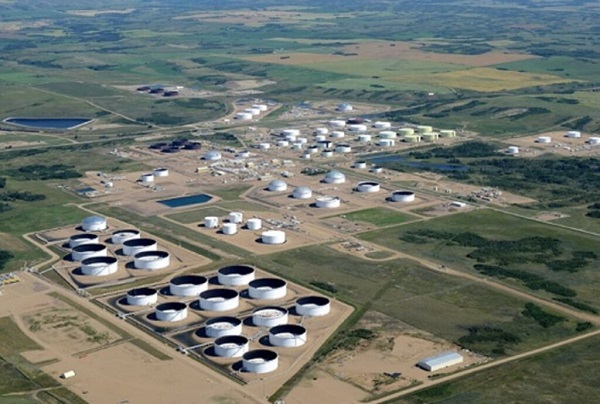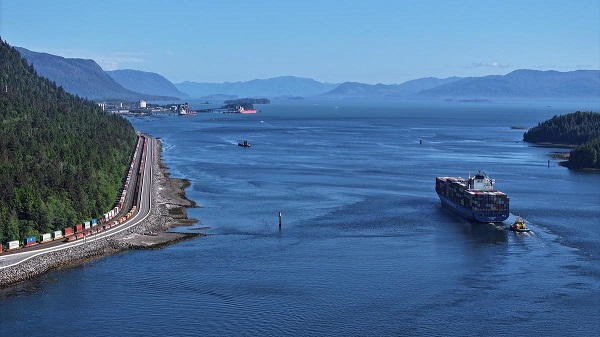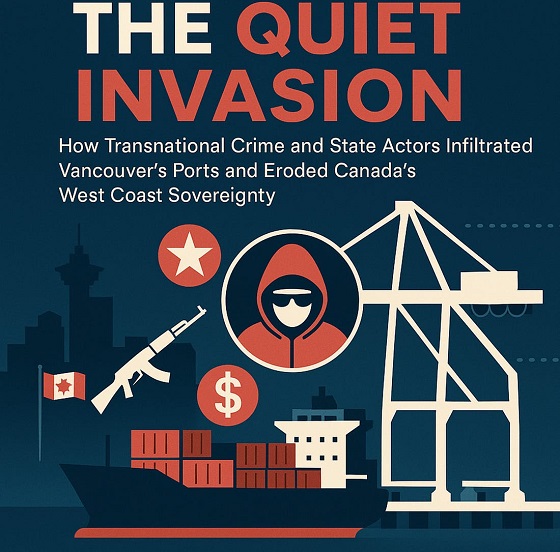Business
Federal government out of touch with economic reality in Canada

From the Fraser Institute
By Jake Fuss and Grady Munro
In light of recent comments from federal Finance Minister Chrystia Freeland about the supposed “vibecession” infecting the brains of Canadians, it’s time to set the record straight. It’s not just that people don’t feel good about the economy, the economic wellbeing of Canadians has been declining for years.
Firstly, it’s true that the overall economy is growing and inflation has been brought back down to the Bank of Canada’s 2 per cent target. While these are positive signs—especially considering the alternative of a shrinking overall economy and rising inflation—they do not necessarily mean that Canadians are better off.
Gross domestic product (GDP)—the value of all goods and services produced in the economy—is the most widely used measure of overall economic prosperity. But measuring it in “aggregate” doesn’t tell us about the individual living standards of Canadians. To gauge how individual Canadians are actually doing, we measure GDP per person (and adjust for inflation). And on this measure, the data tell a different story.
From the middle of 2019 to the end of 2023, Canada experienced one of the worst declines in inflation-adjusted GDP per person of the last 40 years. According to new data from Statistics Canada, this decline in living standards has continued for most of 2024, and as of September 2024, GDP per person ($58,601) was 2.2 per cent lower than in June 2019 ($59,905). Simply put, Canadians have suffered a marked decline in living standards over five years.
And while GDP per person is a broad measure of individual prosperity, other measures tell a similar story.
According to a recent study published by the Fraser Institute, median earnings (i.e. wages and salaries) of workers were lower in every Canadian province than in every U.S. state in 2022 (the latest year of available data). In other words, workers in Canada’s highest-earning province (Alberta) earned less than workers in the lower-earning U.S. states such as Louisiana and Mississippi.
Moreover, Canada’s private-sector employment has stagnated. From 2019 to 2023 (the latest year of available data), employment in the private sector (including self-employment) grew by 3.6 per cent compared to 13.0 per cent in the government sector. And that’s a problem. The private sector pays for the government sector, primarily through taxes. While a growing private sector helps drive wealth-creation in the economy, a growing government sector extracts that wealth and redistributes it elsewhere or even inhibits that wealth-creation in the first place.
Despite data showing that private-sector employment and living standards have stagnated and/or declined for years, the Trudeau government insists that everything is fine and Canadians just “feel” worse off. Clearly, this government is out of touch with economic reality.
Alberta
Pierre Poilievre – Per Capita, Hardisty, Alberta Is the Most Important Little Town In Canada

From Pierre Poilievre
Business
Why it’s time to repeal the oil tanker ban on B.C.’s north coast

The Port of Prince Rupert on the north coast of British Columbia. Photo courtesy Prince Rupert Port Authority
From the Canadian Energy Centre
By Will Gibson
Moratorium does little to improve marine safety while sending the wrong message to energy investors
In 2019, Martha Hall Findlay, then-CEO of the Canada West Foundation, penned a strongly worded op-ed in the Globe and Mail calling the federal ban of oil tankers on B.C.’s northern coast “un-Canadian.”
Six years later, her opinion hasn’t changed.
“It was bad legislation and the government should get rid of it,” said Hall Findlay, now director of the University of Calgary’s School of Public Policy.
The moratorium, known as Bill C-48, banned vessels carrying more than 12,500 tonnes of oil from accessing northern B.C. ports.
Targeting products from one sector in one area does little to achieve the goal of overall improved marine transport safety, she said.
“There are risks associated with any kind of transportation with any goods, and not all of them are with oil tankers. All that singling out one part of one coast did was prevent more oil and gas from being produced that could be shipped off that coast,” she said.
Hall Findlay is a former Liberal MP who served as Suncor Energy’s chief sustainability officer before taking on her role at the University of Calgary.
She sees an opportunity to remove the tanker moratorium in light of changing attitudes about resource development across Canada and a new federal government that has publicly committed to delivering nation-building energy projects.
“There’s a greater recognition in large portions of the public across the country, not just Alberta and Saskatchewan, that Canada is too dependent on the United States as the only customer for our energy products,” she said.
“There are better alternatives to C-48, such as setting aside what are called Particularly Sensitive Sea Areas, which have been established in areas such as the Great Barrier Reef and the Galapagos Islands.”
The Business Council of British Columbia, which represents more than 200 companies, post-secondary institutions and industry associations, echoes Hall Findlay’s call for the tanker ban to be repealed.
“Comparable shipments face no such restrictions on the East Coast,” said Denise Mullen, the council’s director of environment, sustainability and Indigenous relations.
“This unfair treatment reinforces Canada’s over-reliance on the U.S. market, where Canadian oil is sold at a discount, by restricting access to Asia-Pacific markets.
“This results in billions in lost government revenues and reduced private investment at a time when our economy can least afford it.”
The ban on tanker traffic specifically in northern B.C. doesn’t make sense given Canada already has strong marine safety regulations in place, Mullen said.
Notably, completion of the Trans Mountain Pipeline expansion in 2024 also doubled marine spill response capacity on Canada’s West Coast. A $170 million investment added new equipment, personnel and response bases in the Salish Sea.
“The [C-48] moratorium adds little real protection while sending a damaging message to global investors,” she said.
“This undermines the confidence needed for long-term investment in critical trade-enabling infrastructure.”
Indigenous Resource Network executive director John Desjarlais senses there’s an openness to revisiting the issue for Indigenous communities.
“Sentiment has changed and evolved in the past six years,” he said.
“There are still concerns and trust that needs to be built. But there’s also a recognition that in addition to environmental impacts, [there are] consequences of not doing it in terms of an economic impact as well as the cascading socio-economic impacts.”
The ban effectively killed the proposed $16-billion Eagle Spirit project, an Indigenous-led pipeline that would have shipped oil from northern Alberta to a tidewater export terminal at Prince Rupert, B.C.
“When you have Indigenous participants who want to advance these projects, the moratorium needs to be revisited,” Desjarlais said.
He notes that in the six years since the tanker ban went into effect, there are growing partnerships between B.C. First Nations and the energy industry, including the Haisla Nation’s Cedar LNG project and the Nisga’a Nation’s Ksi Lisims LNG project.
This has deepened the trust that projects can mitigate risks while providing economic reconciliation and benefits to communities, Dejarlais said.
“Industry has come leaps and bounds in terms of working with First Nations,” he said.
“They are treating the rights of the communities they work with appropriately in terms of project risk and returns.”
Hall Findlay is cautiously optimistic that the tanker ban will be replaced by more appropriate legislation.
“I’m hoping that we see the revival of a federal government that brings pragmatism to governing the country,” she said.
“Repealing C-48 would be a sign of that happening.”
-

 Business1 day ago
Business1 day agoRFK Jr. says Hep B vaccine is linked to 1,135% higher autism rate
-

 Crime2 days ago
Crime2 days agoNational Health Care Fraud Takedown Results in 324 Defendants Charged in Connection with Over $14.6 Billion in Alleged Fraud
-

 Business15 hours ago
Business15 hours agoWhy it’s time to repeal the oil tanker ban on B.C.’s north coast
-

 Censorship Industrial Complex1 day ago
Censorship Industrial Complex1 day agoGlobal media alliance colluded with foreign nations to crush free speech in America: House report
-

 Alberta9 hours ago
Alberta9 hours agoAlberta Provincial Police – New chief of Independent Agency Police Service
-

 Health2 days ago
Health2 days agoRFK Jr. Unloads Disturbing Vaccine Secrets on Tucker—And Surprises Everyone on Trump
-

 Alberta14 hours ago
Alberta14 hours agoPierre Poilievre – Per Capita, Hardisty, Alberta Is the Most Important Little Town In Canada
-

 Opinion6 hours ago
Opinion6 hours agoBlind to the Left: Canada’s Counter-Extremism Failure Leaves Neo-Marxist and Islamist Threats Unchecked



